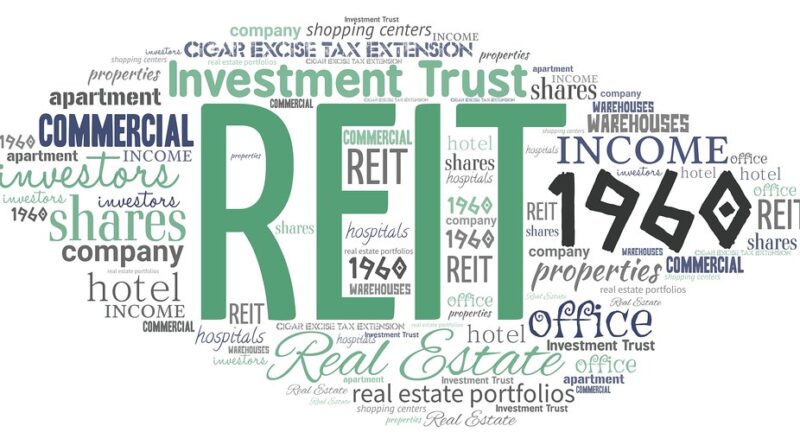Empowering Your REIT Portfolio: Essential Best Practices for Borrowers
Are you ready to unlock the full potential of your REIT portfolio? In the realm of Real Estate Investment Trusts (REITs), following essential best practices is the key to maximizing your investment success. By incorporating these proven strategies, you can navigate the world of REITs with confidence and optimize your portfolio for optimal returns.
Why are best practices so crucial? Think of them as your guiding principles, derived from the collective wisdom and experience of industry professionals. These guidelines provide you with a roadmap, helping you avoid common pitfalls and make informed decisions. By following these best practices, you empower yourself to make sound investment choices and effectively manage your REIT portfolio.
In this article, we will delve into the essential best practices for borrowers in the realm of REITs. We will explore how evaluating the REIT’s investment strategy, reviewing the track record, conducting due diligence on the management team, assessing asset quality, and understanding the financing strategy can significantly impact your investment outcomes. Additionally, we’ll provide real-world examples that demonstrate the positive impact of adopting these practices.
The Significance of Best Practices
Before diving into the specific best practices, it’s important to grasp the significance of adopting these strategies. Best practices are guidelines derived from industry professionals’ collective wisdom and experience. They serve as a roadmap to help you avoid common pitfalls and make informed decisions.
Essential Best Practices for Borrowers
Let’s explore the essential best practices that can empower your REIT portfolio:
Evaluate the REIT’s Investment Strategy
Prior to investing, thoroughly assess the REIT’s investment strategy. Consider its alignment with your investment goals, risk tolerance, and preferred asset class. Understanding the REIT’s approach will help you determine whether it complements your investment portfolio.
Review the REIT’s Track Record
Examine the REIT’s historical performance and track record. Assess the consistency of returns, dividend payments, and the overall stability of the portfolio. A track record of successful investments and prudent risk management is a positive indicator of a reliable REIT.
Conduct Due Diligence on the Management Team
Thoroughly research the REIT’s management team. Look for experienced professionals with a strong track record in the real estate industry. The competence and integrity of the management team play a significant role in the success of the REIT.
Assess the Quality of the REIT’s Assets
Review the quality and diversification of the REIT’s real estate assets. Consider factors such as location, occupancy rates, lease terms, and tenant quality. Diversification across different types of properties can help mitigate risk.
Understand the REIT’s Financing Strategy
Gain insights into the REIT’s financing strategy, including its use of debt and leverage. Evaluate the stability and cost of the REIT’s financing structure, as it can impact the overall returns and risk profile of your investment.
Real-World Examples of Effective Best Practices
Let’s explore real-world examples that demonstrate the positive impact of following these best practices:
Example 1: Maximizing Returns through Asset Quality Assessment
An investor conducted a thorough assessment of a REIT’s assets and identified an undervalued property with substantial potential. This investment turned out to be a lucrative opportunity, significantly boosting the investor’s overall portfolio returns.
Example 2: Mitigating Risk through Diversification
A savvy borrower spread their investments across multiple REITs with diverse property types. As a result, when one sector experienced a downturn, the overall impact on their portfolio was minimized, preserving capital and ensuring long-term stability.
Example 3: Optimizing Cash Flow with Efficient Financing
By carefully analyzing a REIT’s financing strategy, an investor identified a REIT with favorable interest rates and well-structured debt. This led to improved cash flow and enhanced overall returns on the investment.

The Benefits of Adopting Best Practices
Embracing best practices in your REIT portfolio management offers numerous benefits:
- Improved risk management and reduced exposure to potential losses
- Enhanced confidence in investment decisions
- Potential for increased returns through informed asset selection
- Long-term stability and preservation of capital
Potential Challenges
While following best practices significantly enhances your chances of success, it’s essential to be aware of potential challenges or obstacles along the way. These may include:
- Market fluctuations affecting property values
- Regulatory changes impacting the real estate industry
- Unforeseen macroeconomic events
- Changing interest rates and their impact on financing costs
Next Steps: Empower Your REIT Portfolio
Now that you understand the essential best practices for borrowers in the realm of Real Estate Investment Trusts, it’s time to take action. Follow these steps to empower your REIT portfolio:
- Evaluate potential REITs based on their investment strategy, track record, and asset quality.
- Thoroughly research the management team behind each REIT.
- Consider the REIT’s financing strategy and assess its impact on returns and risk.
- Diversify your portfolio across different property types and sectors.
- Regularly monitor the performance of your REIT investments and adjust your strategy as needed.
By incorporating these steps into your investment approach, you’ll be well-positioned to optimize your REIT portfolio and achieve long-term success in the dynamic world of real estate investment.
Additional Relevance:
Staying Informed: Monitoring Market Trends and Industry Developments
To make informed investment decisions and stay ahead of the curve, it’s crucial to monitor market trends and industry developments. Stay informed about changes in the real estate market, regulatory updates, and emerging investment opportunities.
Engage with industry publications, attend conferences and webinars, and network with fellow professionals to stay up to date.
The Importance of Risk Management: Mitigating Potential Pitfalls
Effective risk management is a cornerstone of successful REIT portfolio management. Develop a comprehensive risk management strategy that considers potential risks such as market volatility, property-specific challenges, and financing risks. Regularly assess and reassess the risk profile of your investments and be prepared to adapt your strategy accordingly.
By embracing these additional professional headings, you’ll expand your knowledge and strengthen your ability to navigate the dynamic landscape of REIT investments.
